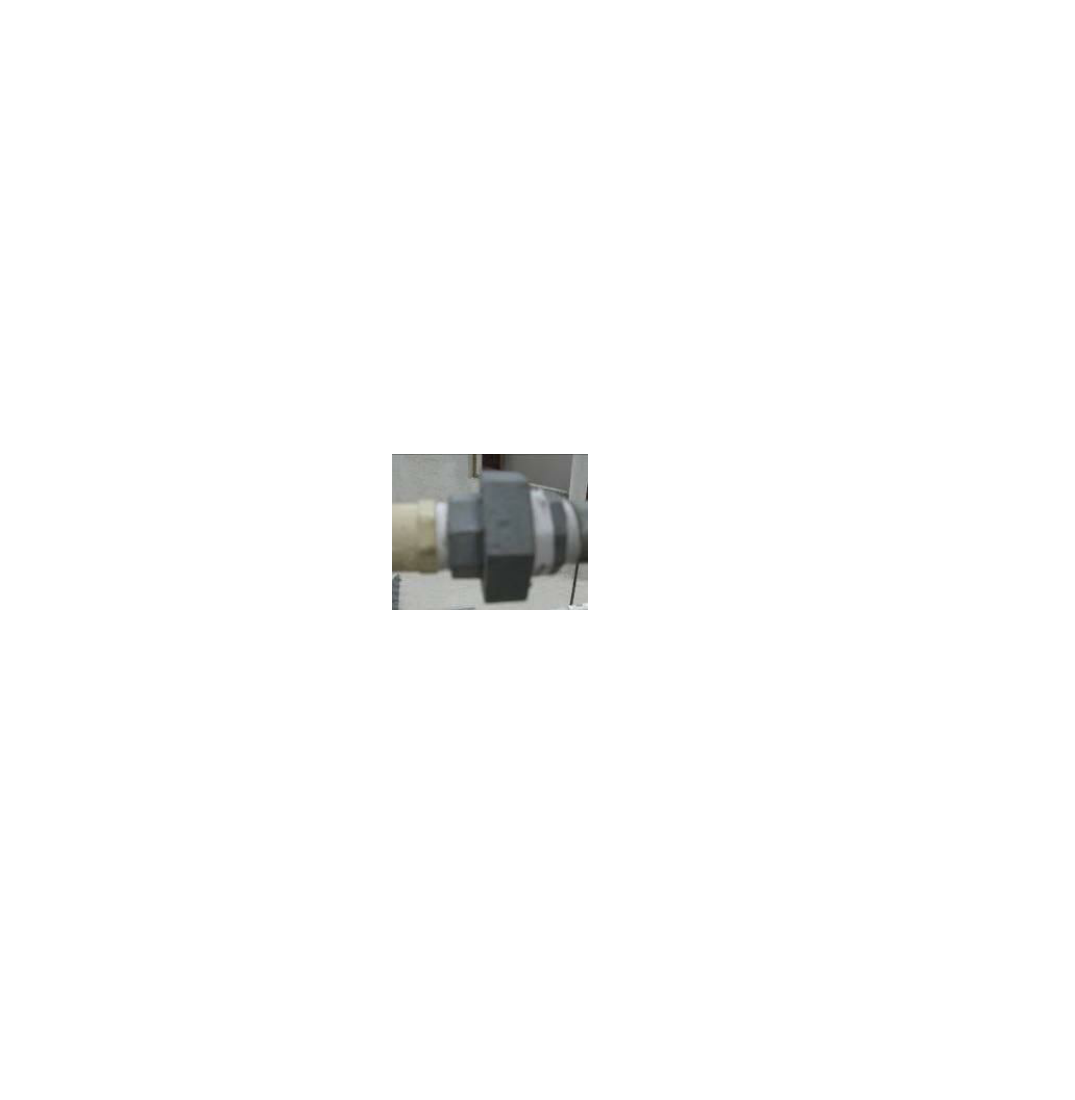
4.2.4 Pipe Lagging
Evaluation is yet to be carried out on the improved system efficiency gained by insulating the
solar circuit, compared with the extra cost. It has been assumed that losses from the plastic
pipes are minimal due to the low thermal transfer of plastic. However side by side system
temperature tests with insulated and un-insulated pipes would be recommendable. As shown
in the case studies in the appendix, there needs to be a better system for installing pipe
lagging (e.g. PVC glue)
4.3 System Charging: procedure for air-venting
„Charging‟ refers to filling the SSWH system with water. This procedure aims to purge air from
the system and should be followed during installation and any repairs. The fitting used on the
inlet to the hot water tank needs to be a movable coupler so that the pipe can stay fixed while
it‟s being tightened (“union universal” in Spanish)
Movable coupler
1. Complete all the pipe-work but leave the final joint between the CPVC pipe and the inlet
to the tank unconnected. Connect the cold return pipe between the tank and the
collectors, but the hot feed pipe just to the collectors
2. Turn the valve on the cold feed to the tank to fill the tank with water. This will then go to
the collectors
3. Let the water run out of the top of the feed pipe; this will purge the air
4. Now connect the (hot pipe) to the tank, by tightening movable coupler union (see
photo.)
5. If there is still air in the system repeat the procedure.
6. The cold supply will automatically shut-off when the tank is full
4.4 Thermal Mixing at the Shower
In Europe solar thermal systems are fitted with an anti-scald valve, usually on the hot water
outlet from the tank. This mixes with cold water to maintain a predetermined maximum
temperature. In Guatemala, the hot water pipe from the tank should be connected into the
existing cold water-fed shower pipe. There should be a cold water shut-off valve before the T,
so that users can mix the water from the solar system if it is too hot. The use of each valve
should be made clear to users with an explanatory poster.
25